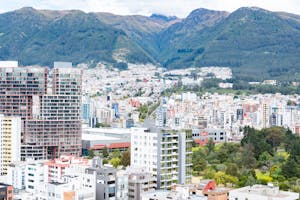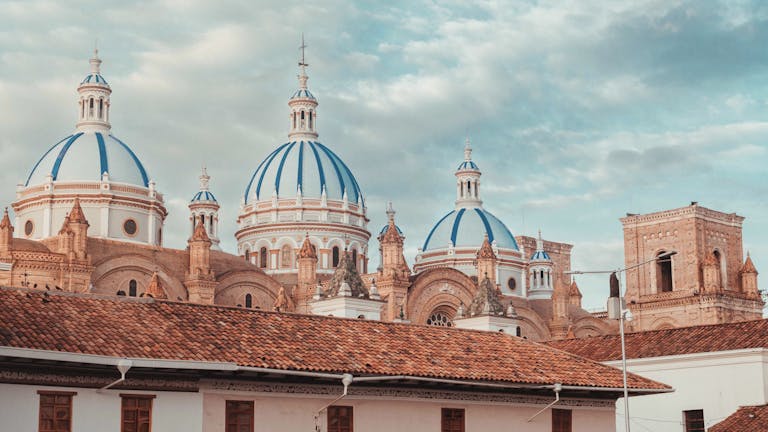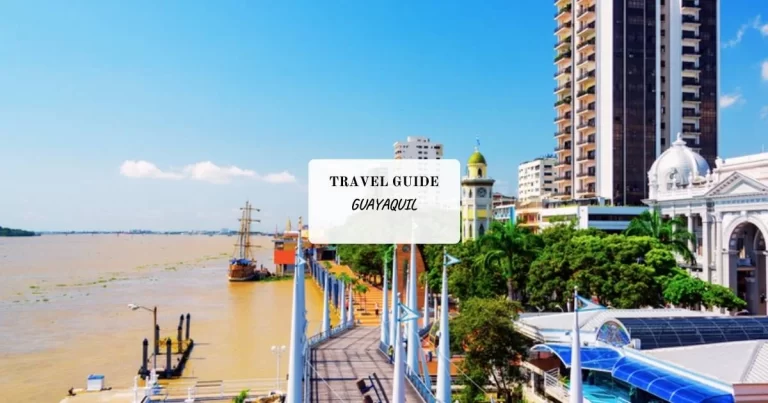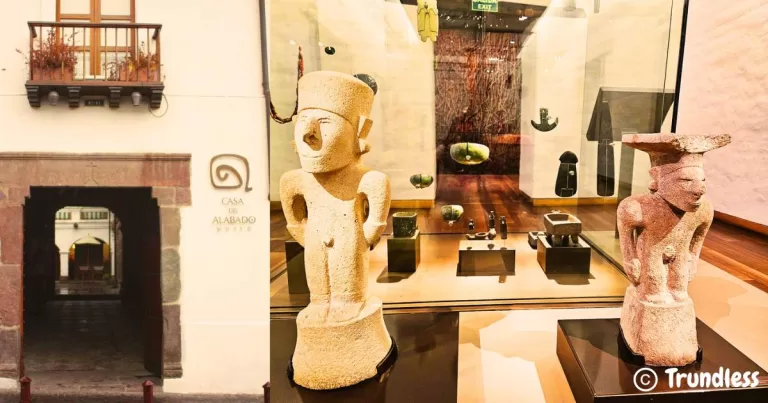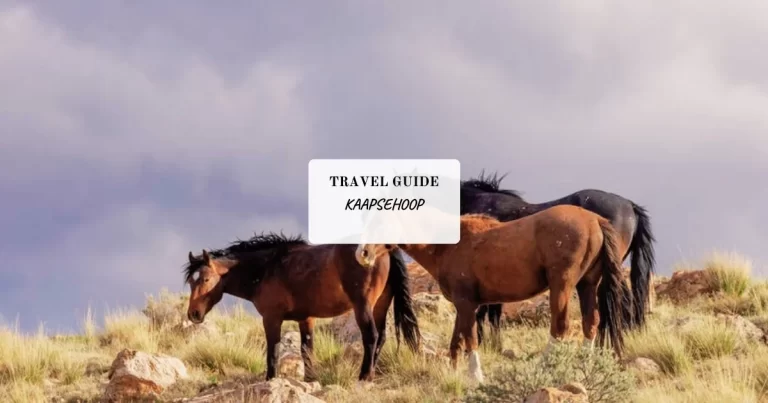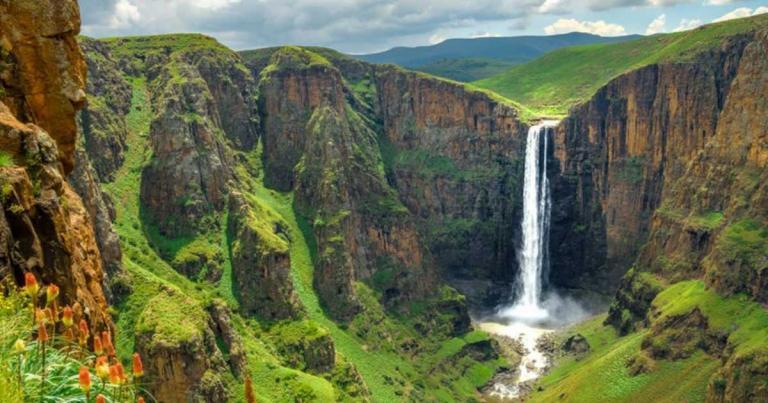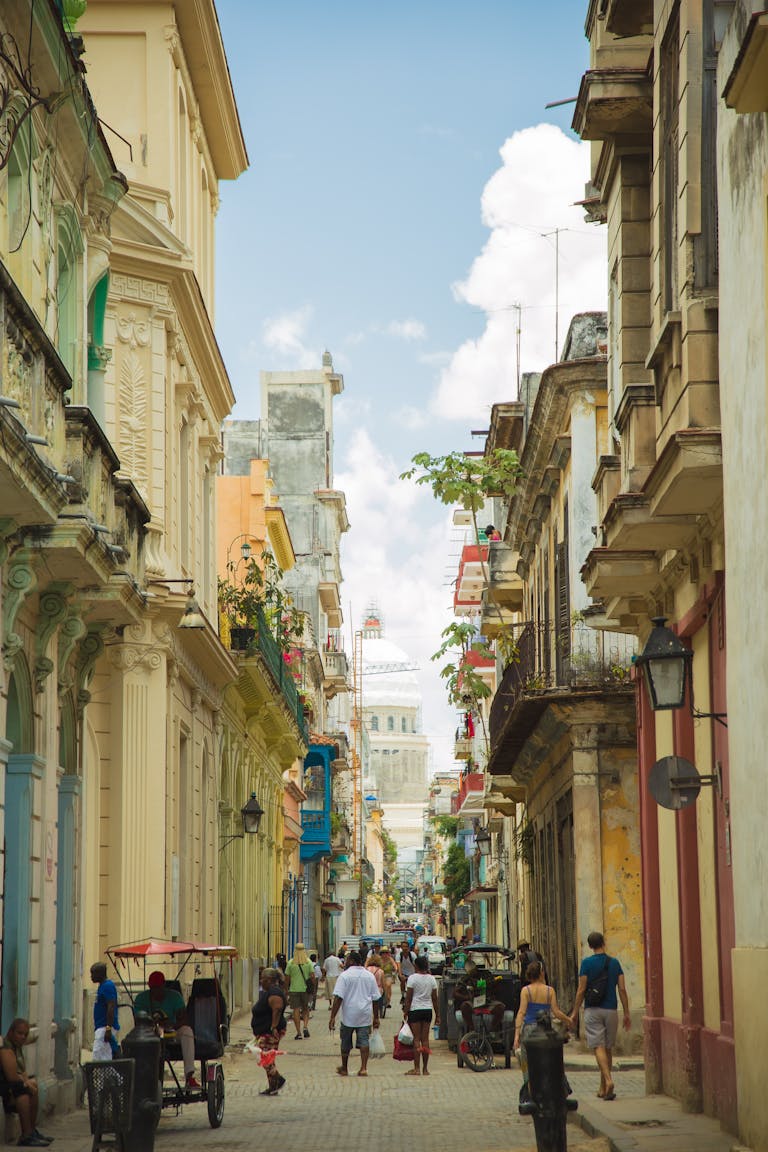Guide To: Top 11 Must-Do Activities in Quito
Nestled high in the Andean mountains, Quito is Ecuador’s vibrant capital. This city, encircled by majestic volcanoes, holds historical and cultural significance as a designated UNESCO World Heritage Site. The rich tapestry of Quito encompasses colonial charm, bustling markets, and awe-inspiring scenic viewpoints that captivate every traveler’s heart.
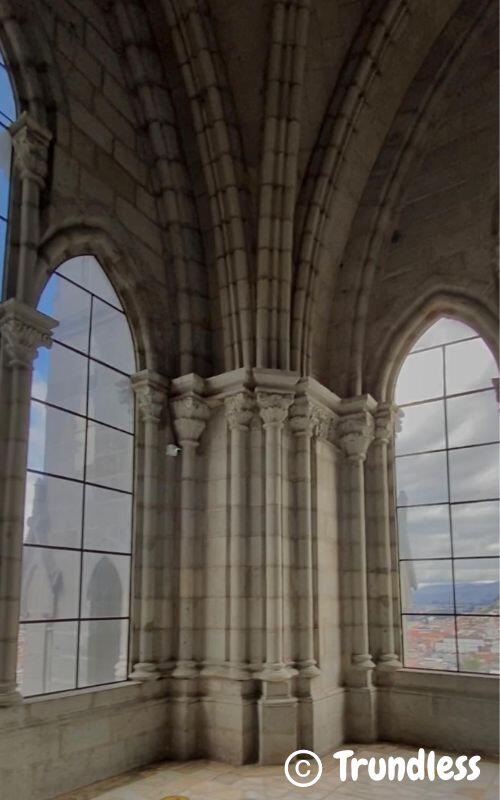
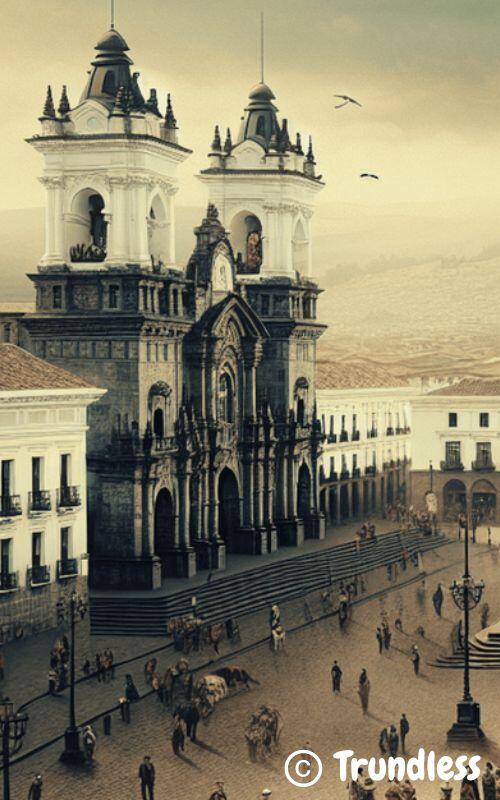
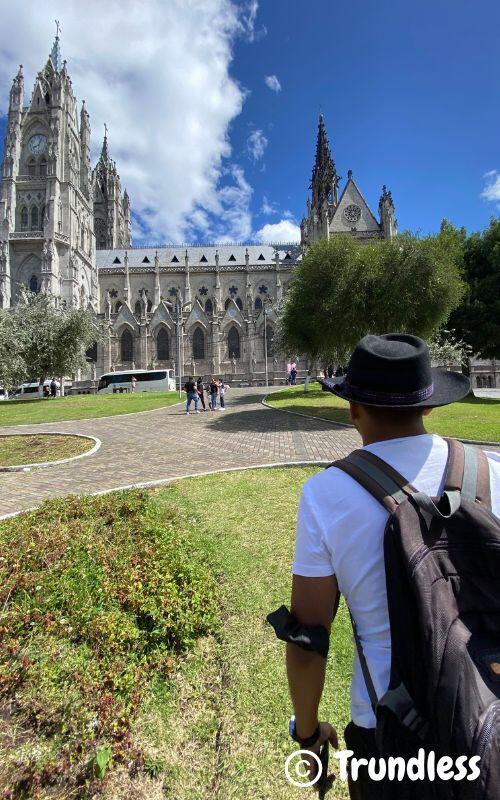
In this article, you’ll find a complete guide to the top 15 things to do in Quito. From exploring architectural marvels and indulging in local cuisine to experiencing thrilling day trips and vibrant nightlife, there’s something for everyone:
- Architectural gems: Discover key highlights like Plaza de la Independencia and Basílica del Voto Nacional.
- Scenic views: Enjoy breathtaking vistas from TelefériQo.
- Cultural experiences: Visit renowned museums such as Museo de la Ciudad.
For practical travel tips on safety, check out Essential Safety Tips for Travelers. To delve deeper into adventures in Ecuador, explore Ecuador.
1. Explore the Historic Center of Quito (Centro Histórico)
Keywords: historical sites Quito, colonial architecture
Quito’s historic center, or Centro Histórico, is a treasure trove of colonial architecture and rich history. Recognized as a UNESCO World Heritage Site, this area beautifully preserves its cobblestone streets, grand plazas, and centuries-old churches.
Key Architectural Highlights
- Plaza de la Independencia (Plaza Grande): This central square is flanked by some of Quito’s most significant buildings. Don’t miss the Monumento a los Héroes del 10 de Agosto, a large statue commemorating Quito’s independence from Spain in 1822. The weekly shift-change ceremony of the President’s guard here is a must-see.
- Iglesia de la Compañía de Jesús: Renowned for its stunning baroque architecture, this church is adorned with gold leaf and intricate carvings. It stands as one of the finest examples of Spanish Baroque architecture in South America.
- Basílica del Voto Nacional: An iconic neo-Gothic basilica known for its unfinished construction. Explore its courtyard featuring endemic animals and stained-glass windows, and don’t miss climbing the Tower of the Condors for panoramic views over Quito.
Personal Recommendations
- Walking Tours: To get the most out of your visit, consider joining a walking tour. Many tours include visits to major sites like Museo de la Ciudad, which offers free guided tours covering Quito’s history and culture.
- Dining: After exploring the historic center, unwind at one of La Ronda’s traditional restaurants such as Los Fogones De Jazmin. The charming live music atmosphere pairs well with Ecuadorian cuisine.
- Shopping: For unique souvenirs, stroll through nearby markets where you can find local crafts like handmade textiles and jewelry.
Exploring Quito’s historic center offers a captivating glimpse into Ecuador’s colonial past while showcasing vibrant cultural elements that make this city truly unique.
2. Enjoy Scenic Views from TelefériQo
TelefériQo is an aerial lift that takes you up the eastern slope of Volcán Pichincha, offering some of the most breathtaking views in Quito. The cable car ascends to Cruz Loma lookout at an altitude of 4,100 meters, providing panoramic vistas over the city and surrounding volcanoes.
Tips for Taking the Cable Car Ride:
- Best Time to Visit: Aim for early mornings or late afternoons when the skies are clearer to maximize your viewing experience.
- Dress Warmly: Temperatures can drop significantly at higher altitudes. Layer up to stay comfortable.
- Altitude Considerations: Be mindful of altitude sickness; take it slow and stay hydrated.
From the top, you can enjoy hiking trails with stunning scenery, making it a must-visit spot for nature enthusiasts.
To explore more about Ecuador’s diverse landscapes and wildlife, check out Ecuador and the Galápagos Islands: Nature’s Best Wonders.
3. Stroll Along La Ronda Street
Calle de La Ronda, one of Quito’s oldest streets, exudes colonial charm with its cobblestone pathways and vibrant atmosphere. This enchanting street is perfect for a leisurely stroll, offering a glimpse into Quito’s rich history and culture.
Highlights:
- Colonial Architecture: Admire the well-preserved colonial buildings that line the street, each telling a story of Quito’s past.
- Artisan Shops: Discover unique, hand-crafted goods in the many artisan shops. Look out for alpaca sweaters, handmade textiles, and local jewelry.
- Traditional Restaurants: Savor authentic Ecuadorian cuisine at traditional restaurants like Los Fogones De Jazmin.
Recommendations:
- Dining: Enjoy a hearty meal featuring local dishes such as locro de papa (potato soup) or empanadas de viento (cheese empanadas).
La Ronda comes alive at night, especially on Fridays and Saturdays, with live music and street performances, making it an ideal spot to experience Quito’s vibrant nightlife.
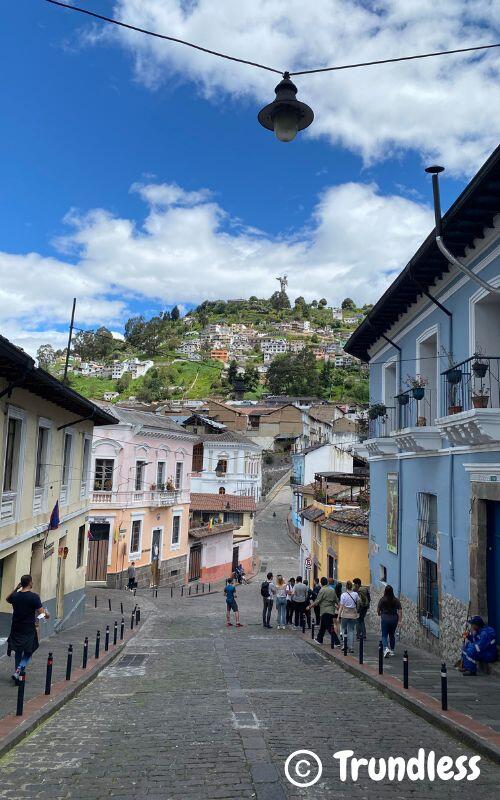
4. Indulge in Local Cuisine at Top Restaurants
Ecuadorian cuisine is a delightful blend of fresh ingredients and bold flavors. Quito offers a variety of traditional dishes that every traveler should try. Some must-try foods include:
- Ceviche: A refreshing dish made with raw seafood “cooked” in citrus juices, often mixed with onions, tomatoes, and cilantro.
- Locro de Papa: A hearty potato soup with cheese and avocado.
- Fritada: Seasoned pork chunks served with mote (hominy), potatoes, and fried plantains.
- Empanadas de Viento: Fried pastry filled with cheese, sprinkled with sugar.
- Motepillo: a dish made from hominy mixed with scrambled eggs, onions, garlic, and achiote
Top Restaurants to Visit
For an authentic taste of Quito’s culinary scene, consider dining at these recommended eateries:
- Heladería San Agustín: The restaurant is highly regarded for its traditional ambiance, excellent food quality, and standout artisanal ice cream.
- La Casa Los Geranios: This restaurant serves traditional Ecuadorian dishes such as locro de papa, fritada, and llapingachos.
Exploring these culinary delights will not only satisfy your taste buds but also provide a deeper understanding of Ecuadorian culture.
5. Discover Cultural Experiences at Museums in Quito
Exploring the museums in Quito offers a deep dive into Ecuador’s rich culture. Here are a couple of must-see museums that reflect Quito’s vibrant history and artistic heritage:
Museo de la Ciudad
Located in the heart of the historic center, the Museo de la Ciudad is housed in a former hospital dating back to 1565. This museum tells the story of Quito’s evolution from ancient times to now.
- Exhibits: The museum’s exhibits include artifacts, traditional clothing, and interactive displays that offer insights into daily life throughout different historical periods.
- Significance: It showcases Ecuadorian identity and heritage through its well-curated collections, making it an essential visit for history enthusiasts.
Casa Museo Guayasamín
Dedicated to one of Ecuador’s most famous artists, Oswaldo Guayasamín, the Casa Museo Guayasamín is situated in the artist’s former home and studio.
- Art Collection: The museum features an extensive collection of Guayasamín’s paintings, sculptures, and personal artifacts.
- Cultural Importance: His works often depict themes of human suffering and social injustice, offering a poignant perspective on Ecuadorian and Latin American history.
Both museums provide unique windows into Quito’s cultural landscape:
- Museo de la Ciudad: Focuses on historical narratives and everyday life.
- Casa Museo Guayasamín: Highlights artistic expression and social commentary through visual arts.
These culturally enriching experiences not only educate but also foster a deeper appreciation for Ecuador’s diverse heritage.
6. Take a Day Trip to Cotopaxi National Park
Cotopaxi National Park is one of Ecuador’s most iconic natural treasures. Dominated by the majestic, snow-capped Cotopaxi Volcano, the park offers a variety of activities for adventure enthusiasts and nature lovers alike.
Activities Available at Cotopaxi:
- Hiking: Explore trails that take you through diverse landscapes, from lush forests to rugged volcanic terrain. A popular option is the hike to the José Rivas Refuge at 4,800 meters.
- Horseback Riding: Experience the Andean highlands on horseback, guided by local experts who will enrich your journey with cultural and natural insights.
- Mountain Biking: For thrill-seekers, mountain biking down Cotopaxi offers an adrenaline-pumping way to enjoy the scenery.
Guided Tours & Self Tours
Opting for a guided tour can enhance your visit:
- Viator: There are a variety of tours available on this website, and they are likely to be better priced than those offered by tour companies that tend to overcharge tourists.
- Self Tours: One of the cheapest and most affordable ways to visit Cotopaxi for the day is to take the Quito metro to Terminal Quitumbe (Quito’s biggest bus terminal). From there, catch a morning bus to Latacunga and ask the driver to drop you off at the bridge leading to the entrance of Cotopaxi National Park. At the bridge, you’ll find various pickup trucks waiting, and you can negotiate with them directly. You shouldn’t pay more than $30-40 for a tour up to the various viewpoints in Cotopaxi. The tour typically takes around 4 hours, after which the driver will take you back to the bridge. From there, you can catch one of the buses heading back to Quito’s Quitumbe station.
- Rent a Car: This will be one of the more expensive options. You will need an international drivers license, and you’ll incur costs for fuel, rental fees, and entrance fees to the park. However, you will have more freedom to visit Cotopaxi at your own pace. Tours often rush through everything, which can be frustrating for travelers who want more time to absorb Cotopaxi and its beautiful views.
Practical Tips
- Altitude Sickness: Given the high altitude, it’s advisable to acclimatize in Quito for a few days before heading to Cotopaxi.
- What to Bring: Pack layers of clothing, water, snacks, and sun protection.
- Comfortable hiking shoes for the hike up to the refuge.
Exploring Cotopaxi National Park provides an unforgettable experience amid Ecuador’s stunning natural beauty, making it a must-visit destination during your stay in Quito.
7. Visit the Stunning Laguna Quilotoa Crater Lake on a Day Trip from Quito
Laguna Quilotoa, a breathtaking volcanic crater lake, is an essential day trip from Quito. Nestled in the Ecuadorian Andes, this turquoise gem is famous for its vibrant color and dramatic setting.
Tips for Planning Your Visit
- Travel Arrangements: Consider booking a tour or using public transportation. Tours often include stops at nearby indigenous villages and scenic viewpoints. For self-tours similar to those of Cotopaxi, you can either rent your own car or take a bus from Terminal Quitumbe, which is a more affordable option compared to guided tours.
- What to Bring:
- Comfortable hiking shoes: The hike down to the lake and back up can be challenging.
- Layers of clothing: Weather can change quickly at high altitudes.
- Snacks and water: While there are small shops, it’s best to come prepared.
- Activities:
- Hiking: Enjoy trails around the crater rim or descend to the water’s edge.
- Kayaking: Rent kayaks on-site for a unique perspective of the lake.
Soak in the stunning views and immerse yourself in this natural wonder during your Laguna Quilotoa day trip from Quito.
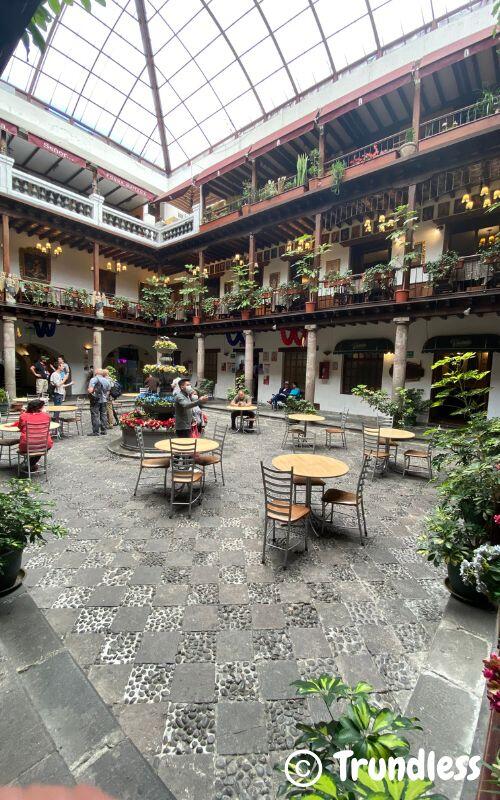
8. Explore Otavalo Markets for Unique Artisan Goods
Otavalo Markets, known for their lively atmosphere and rich cultural heritage, offer a shopping experience like no other. Located in the town of Otavalo, these markets are a treasure trove of local crafts and handmade goods.
Highlights of Otavalo Markets
- Alpaca Sweaters: Soft, warm, and intricately designed, these sweaters are a must-buy.
- Handmade Textiles: Discover a variety of traditional textiles, including scarves, tapestries, and blankets.
- Jewelry and Accessories: Unique pieces crafted by local artisans using traditional techniques.
- Leather Goods: From belts to bags, find high-quality leather items that make perfect souvenirs.
Tips for Shopping
- Bargaining is Common: Don’t hesitate to negotiate prices down respectfully.
- Visit Early: Arrive in the morning to explore before the crowds.
- Cash is King: Many vendors prefer cash payments; ensure you have small bills.
The Otavalo Markets not only support local artisans but also provide visitors with an authentic taste of Ecuadorian culture through its diverse array of handcrafted items.
9. Enjoy Parks and Outdoor Spaces in Quito
Quito is home to several inviting parks where you can unwind and connect with nature. Among the most popular parks in Quito is Parque La Carolina, a sprawling urban oasis perfect for family outings or solo relaxation. This park features:
- Playgrounds: Ideal for children.
- Sports facilities: Including soccer fields, basketball courts, and running tracks.
- Boating lake: Rent a paddleboat for a serene experience on the water.
Within Parque La Carolina, you’ll find the Jardín Botánico, a vibrant garden showcasing diverse plant species native to Ecuador. This botanical garden offers:
- Orchid collection: One of the largest in the country.
- Tropical plants: See the rich variety of Ecuador’s flora.
- Guided tours: Learn about the unique ecosystems.
Another must-visit is Parque Itchimbia, offering scenic viewpoints for panoramic city views. This park is known for:
- Cultural events: Hosting concerts and festivals throughout the year.
- Walking paths: Perfect for leisurely strolls while taking in breathtaking vistas.
Whether you’re looking to engage in physical activities or simply relax amidst nature, these parks provide an excellent escape from the hustle and bustle of city life.
10. Marvel at El Panecillo’s Virgen de El Panecillo Statue Overlooking the City
The Virgen de El Panecillo statue is a towering 41-meter-tall aluminum statue of the Virgin Mary that majestically overlooks Quito from atop El Panecillo Hill. This iconic monument, also known as the “Virgin of Quito,” is unique for its depiction of the Virgin with wings, symbolizing protection over the city.
Tips for visiting this landmark:
- Best Time to Visit: Sunset offers some of the most breathtaking views as the city lights up and you can capture stunning photographs.
- Getting There: Reaching El Panecillo is easiest by taxi or a guided tour, especially during the evening hours for safety reasons.
- What to Bring: A camera to capture panoramic views, a light jacket since it can get chilly at higher altitudes, and some cash for local vendors if you plan on buying souvenirs.
Enjoy not only the statue itself but also the sweeping vistas of Quito and its surrounding volcanoes from this elevated viewpoint.
11. Experience Vibrant Nightlife and Cultural Events in Quito
Quito comes alive after dark with a vibrant nightlife that caters to various tastes. Whether you prefer trendy bars, lively clubs, or cultural performances, the city has something for everyone.
Nightlife Spots:
- Plaza Foch: Known as the epicenter of Quito’s nightlife, Plaza Foch is brimming with bars, restaurants, and nightclubs. Popular spots include Bungalow 6 and Cherusker Cervecería.
- Whimper: This is a popular spot with locals, featuring a variety of bars such as Bandidos Del Páramo, Katari, and Cervecería Sabai.
Cultural Experiences:
- Teatro Nacional Sucre: A must-visit for theater lovers, this historic venue hosts a range of performances from opera to contemporary dance.
- National Events in Quito: Most of Quito’s main national events are celebrated in August and December. These festivities commemorate the founding of Quito with parades, concerts, and traditional dances.
- Museos Nocturnos: On select nights, museums such as Museo de la Ciudad open their doors for nighttime tours and special exhibits.
Exploring Quito’s nightlife and cultural events is an excellent way to immerse yourself in the local culture while enjoying the city’s energetic atmosphere.

